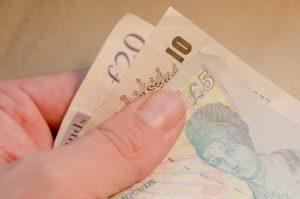Top Tips For Group Riding

Riding with a group of like-minded individuals can be a great way to make new friends. You may also find and explore new routes, discover different cafés, and is also safer than riding on your own as the group is generally far more visible.
However, many people can be quite intimidated by the prospect of riding in a group and so never try it out, and eventually miss out on all the benefits group riding can bring. I’m a big advocate of group riding, and often lead social rides out as part of my commitment to help more people get on their bikes and enjoy the great outdoors. Below is a summary of many of the questions or worries I hear from new group riders (and their answers of course!).
Is the ride suitable for me?
‘Club’ rides can be quite an experience for new riders, many have an expected pace, and if you can’t keep up you will be dropped. If you’re concerned about this then contact the club / ride organiser in advance and check out any expectations. A much better introduction to group riding for beginners is to find a social ride in your area. These rides tend to be a much more leisurely pace, and most have a ‘no drop’ rule and adjust their pace to suit that of the slowest rider. Some good examples of these are the social rides available at ‘Lets Ride’ or the FLAB social ride program. For ladies there is also the ‘Breeze’ initiative that organises ladies only rides all over the country.
How does a group ride work?
All group rides should have a designated and experienced ride leader. If you have any pre-ride questions they should be available to answer them for you. If you can’t contact the ride leader in advance we Suggest arriving at the designated start point in plenty of time and asking your questions then.
Some general tips and advice we have can be summed up:
Communicate.
Most groups have a system of shouts and / or hand signals to identify potential hazards. Shouts of “Car back” or “Car front” to warn others of approaching traffic from the appropriate direction are common. Also common are hand signals to point out hazards such as potholes, obstructions, roadkill, and other hazards. Learn what your group uses in various situations and join in. If you’re at the back then some warning of a car approaching from behind will be appreciated. Similarly if you find yourself at the front then you’ll be the first to see a hazard. Warn your group and keep everyone safe.
Ask for advice
If you’re new to the group, let them know that and ask for advice. Cyclists are generally a pretty friendly bunch and are more than happy to help newcomers out. If the group does or says something you don’t understand, then ask them to explain, it could prevent any potential problems in the future.
Ride in formation
Depending on whether the group likes to ride as a bunch, or in a line, respect their etiquette and adopt the same formation. Be aware that the formation may change during the ride. It’s not uncommon for a group to ride two abreast on a wider road. This makes the group shorter and easier for cars to overtake. The group may then change to a single file formation on narrower roads to leave enough room for passing traffic. You might also find our article on group riding formation helpful.
Don’t overlap
Riding side by side is fine if that’s what your group does. However, if you’re behind someone, don’t allow your front wheel to overlap the rear wheel of the rider in front. If the rider in front makes a sudden swerve, then they are going to take you out.
Anticipate
The group communication system works well, but try to keep an eye on the road ahead of you as much as you can and anticipate how other riders may react to what’s happening on the road.
Easy on the brakes.
Especially important this one if you’re in the middle or at the front of the group. Suddenly slamming on the brakes unannounced is going to make you unpopular at best, or cause a pile up at worst. Much better to slowly apply the brakes and come to a controlled halt. If you do have to brake suddenly, then always shout out to let others behind you know what’s happening.
Mudguards
If you’re riding in the wet (or recently wet) then be kind and fit mudguards to your bike. It’s considered very bad form to ride in the middle of the group with water and / or muck spraying up from your back wheel into the faces of those behind you. If you are without mudguards and there’s an unexpected shower, offer to move to the back to avoid spraying others.
Relax
Lastly and most importantly, enjoy the ride. A social ride should be a place for people to ride at a reasonable pace but still be able to chat along the way. If the ride you’ve chosen is too fast or serious, there’s no shame in bailing out part way through and looking for something a little more suitable for your next ride.
If you found this advice helpful please consider supporting us by buying a tea at www.buymeacoffee.com/cyclinglabs








